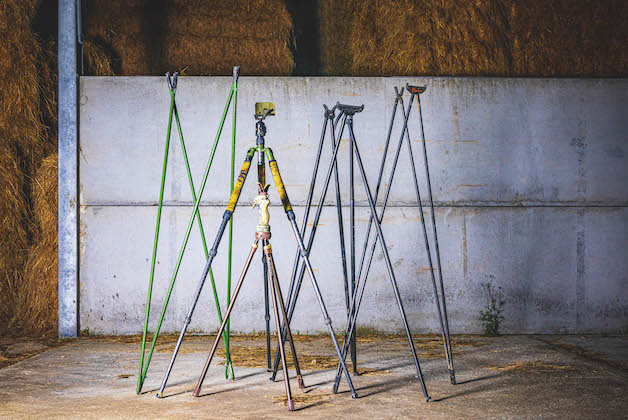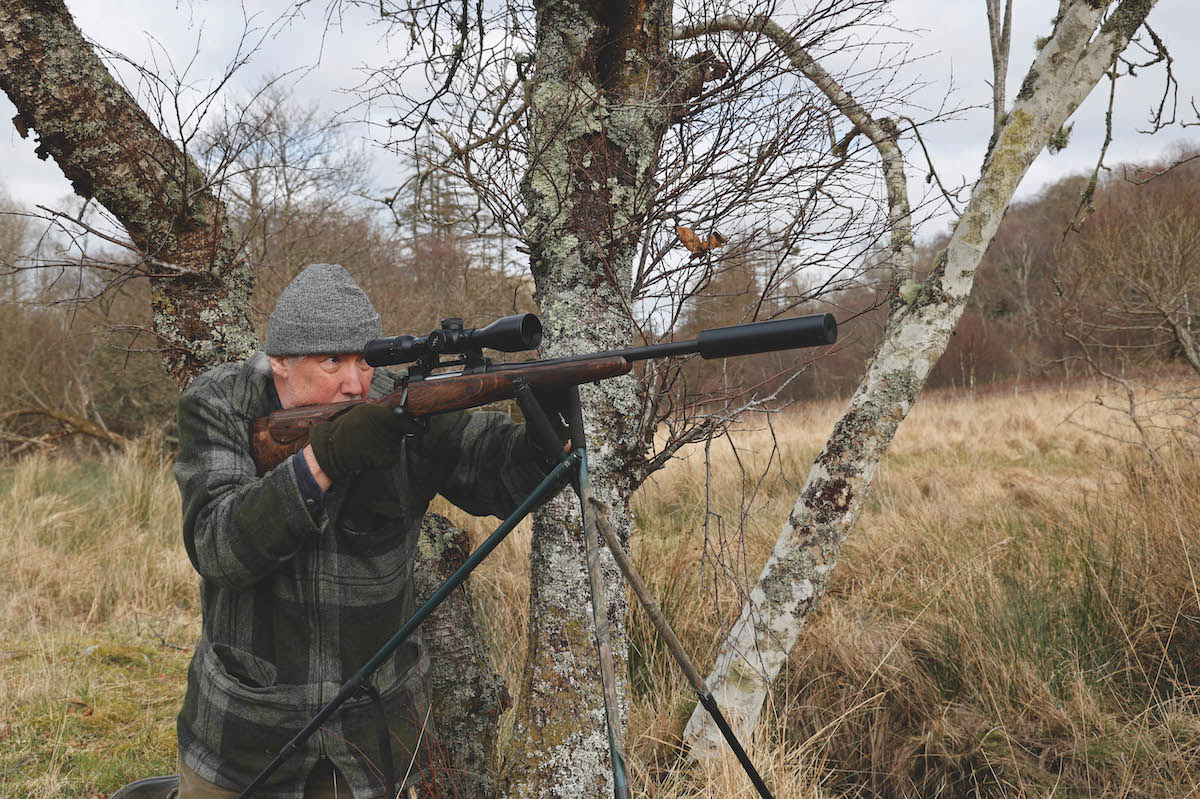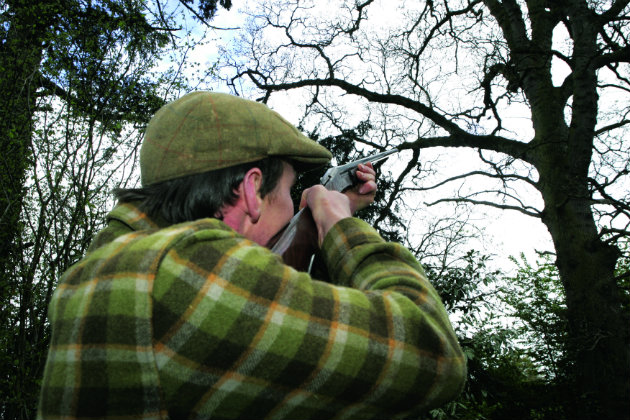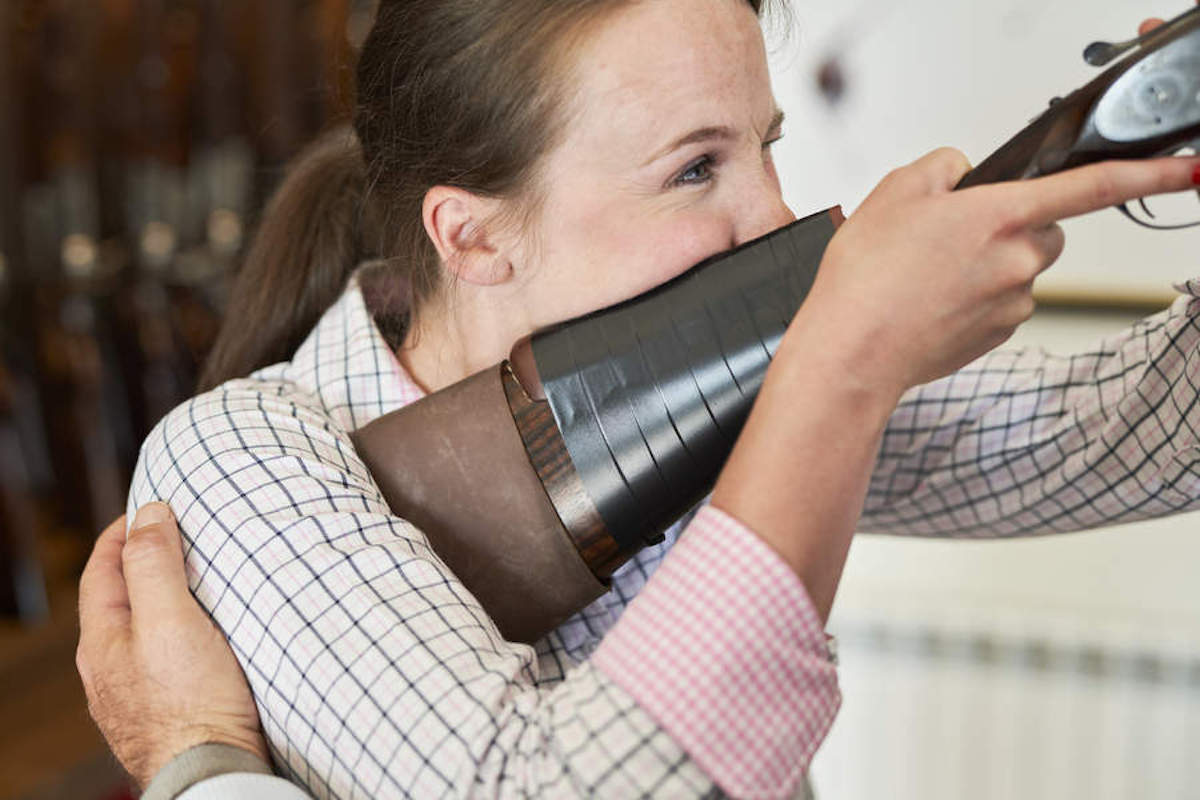The best shooting sticks: a selection for the field
Ensure your shots are precise every time by using a solid rest, says Mark Ripley

Shooting sticks left to right: Home-made, Rekon Tripod, (Lower Primos Trigger Sticks), Viperflex Styx Journey, Stable Sticks.
Why we need shooting sticks
It’s all too easy to miss a fox or a deer, especially when adrenaline kicks in and you don’t have a solid rest. I know I’ve missed shots in the past when I’ve tried to shoot off a fence post or tree branch and, though often you will get away with it, it’s far better to have a good solid rest with you to make the shot more precise.
Nobody likes to see animals suffer as the result of a poor shot. The use of an additional support when shooting in the field makes for a more accurate and, therefore, humane shot when stalking or carrying out pest control. (Look at our review of the best hunting trousers.)
Shooting sticks — whether they be bipod, tripod or quads — need to be both strong and lightweight, making them easy to use and carry in hunting situations. The use of carbon fibre is now commonplace in the manufacture of sticks, and over the years, I have used quite a selection of different options to find one that suits me. From home-made quad sticks to precision tripods, each has their own advantages — and disadvantages — so it is important to consider which type of shooting support best suits your requirements.
Shooting Times contributor and keen stalker Ian Watson advises: “Back in the day, and even not so long ago, most stalkers who used sticks had a couple of green garden canes from a well-known DIY store lashed together as their shooting support. Oh, how things have changed.
“Now, you are confronted with a range of options, from single poles to sets where you probably need a training course in how to stand them up. The obvious way to go is to get something you are comfortable and confident with — and not to overstretch yourself when you use them. It generally comes down to a combination of weight, ease of use and stability, and compromises will have to be made.
“Many stalkers prefer to use the four-pole types but, depending on the brand chosen, these can be bulky and challenging to set up, when time and movement are of the essence. Two-pole types are usually lighter and quicker in operation, but — and it can be a big but — lack the stability of multi-leg sets. If your friends have a variety of sticks among them, I suggest you try these out during a visit to the range and decide which type you can get on with. In our damp winter climate, it’s worth remembering that the more moving parts and complications a set of sticks has, the more prone they will be to failure, and the more regular care they will need to keep them in good order. ”
Here we’ve picked five of the most popular shooting sticks for use in the field.

Anyone with basic DIY skills should be able to knock together some home-made sticks
1.Home-made sticks
- Rating 5/10
- Cost: under £30, depending where you shop
- Weight: around 850g
- Supplier: B&Q or any hardware store
The first option is one that almost everyone will have tried at some point. For those of us who really don’t want to part with much money, this is the one for you. The set of quad sticks you see here was built simply from a few nuts and bolts and four green metal heavy-duty garden canes from B&Q. It doesn’t take a lot of DIY expertise to cobble something like this together, and it makes for a lightweight option that you can tailor to your own height and use to take pretty accurate shots in the field. These can be folded up to carry and be quickly deployed, and if you inadvertently leave them leaning up against a tree in the middle of a wood, it’s no great loss. The obvious disadvantage with this style is that they can’t be easily reduced in length for easier transportation. Additionally, the ‘V’-style notch offers little ability to pan round on a target, unlike purpose-made sticks, which often incorporate a beam-style front support in order to accommodate this. Perhaps with a little more ingenuity you could also incorporate this feature into your own DIY design?

Viper-Flex Journey
2. Viper-Flex Journey from £288.10
Best for all-round use
- Rating 9/10
- Weight: 1,050g (1,325g with fifth leg)
The Viper-Flex quad sticks are probably the benchmark against which all other sticks are measured. These offer the ability to quickly adjust for length, for ease of transport and to suit individual shooters, as well as a generous length front beam for pan adjustment.
These are made with carbon fibre and anodised aluminium to keep weight to a minimum, yet offer a very solid rest. The Viper-Flex also offers an optional front-leg support to provide a third point of contact with the ground. Though this takes longer to set up, the extra support makes for extremely accurate shot placement.
Attaching the fifth leg means the sticks can be set out holding a rifle hands-free, allowing you to use binoculars or call unhindered. (Read our review of the best binoculars.)

Viper-Flex quad sticks offer extremely accurate shot placement, especially if used with the optional front-leg support
A disadvantage to any quad stick is that they are more difficult to set out or adjust position, especially on uneven or steep ground. To move quad sticks on to target often means stepping them round, which is a pain in bramble or in wooded areas.

Stable Sticks are lightweight and compact, making them an ideal choice for deerstalkers
3. Stable Sticks Ultimate Carbon £200
Best for deerstalking
- Rating 8/10
- Weight: 820g
Moving on to another purpose-made option, we have the Stable Sticks. These are made from lightweight carbon fibre, making them easy to carry in the field, and can be disassembled for compact travel.
A silly but worthwhile fact is that carbon fibre doesn’t get cold like metal, so it’s not going to freeze your fingers carrying it in the winter. These sticks also incorporate the beam-style front, allowing for horizontal pan on moving targets, though the beam is a little shorter than other models. There’s a little flex in the stick legs, but not to the point that it really affects its use with most sporting rifles. It may be a consideration with a particularly heavy rifle, however.
The lightweight compact nature of these sticks makes them the easiest set in the line-up to carry, and a good choice for the deerstalker.

Tracking targets such as foxes is easy with this versatile tripod
4. Primos Trigger Stick Gen 3 £159.10
Best for foxing
- Rating: 8/10
- Weight: 1,420gs
These are a great design — easily collapsible and height adjustable with nothing more than a pull on the trigger system. And as the legs deploy under their own weight, they adjust to uneven ground and can easily be further adjusted with the one-handed trigger system.
This is an extremely quick and versatile tripod system, offering a good solid rest and taking advantage of a good range of movement, both from the tripod itself and the ability to easily move it around to track moving targets.
These are a good option for foxing, when the target is rarely still. At sensible ranges, these offer a great support on uneven ground and where the opportunity of a shot might be fleeting.
The lightweight and compact design will also easily adapt to seated and kneeling shots, as well as standing ones.

This may be a bulkier option, but it is still surprisingly light and easy to collapse
5. Wicked Lights Rekon tripod from £299
Best for uneven terrain
- Rating: 9/10
- Weight: 2,300g
The Rekon is the tripod that I’ve now adopted for all my stalking and foxing. Though bulkier, its carbon-fibre legs mean it’s surprisingly light to carry and offers an exceptional level of stability.
The tripod is also versatile for positional shooting, thanks to its quick adjustable locking legs, which allow for any terrain shooting — standing, seated, kneeling and even prone. It can also be quickly collapsed for easy transportation and can be used with either an Arca Swiss mount directly to a rifle with an underrail or via the optional pig-saddle system, allowing for use with any rifle. Both options offer a hands-free, solid hold.
The whole system is purpose built for shooting, and designed by military snipers for precision shooting at extended ranges with a full range of movement, even on uneven terrain.
Conclusion
When picking a suitable shooting rest, your budget and shooting requirements are the two main considerations. For any shooting that requires a lot of walking, such as stalking or pest control, the lightweight option — in the form of a set of quad sticks — is best, as long as the ground is fairly flat.
On uneven terrain — or where opportunities may be a little more fleeting — then the more versatile tripod system will be a better option, especially if you’re doing more static shooting that may involve calling or spotting, where a hands-free support can be useful.
For this reason, my top choice would be the Viper-Flex Journey.








